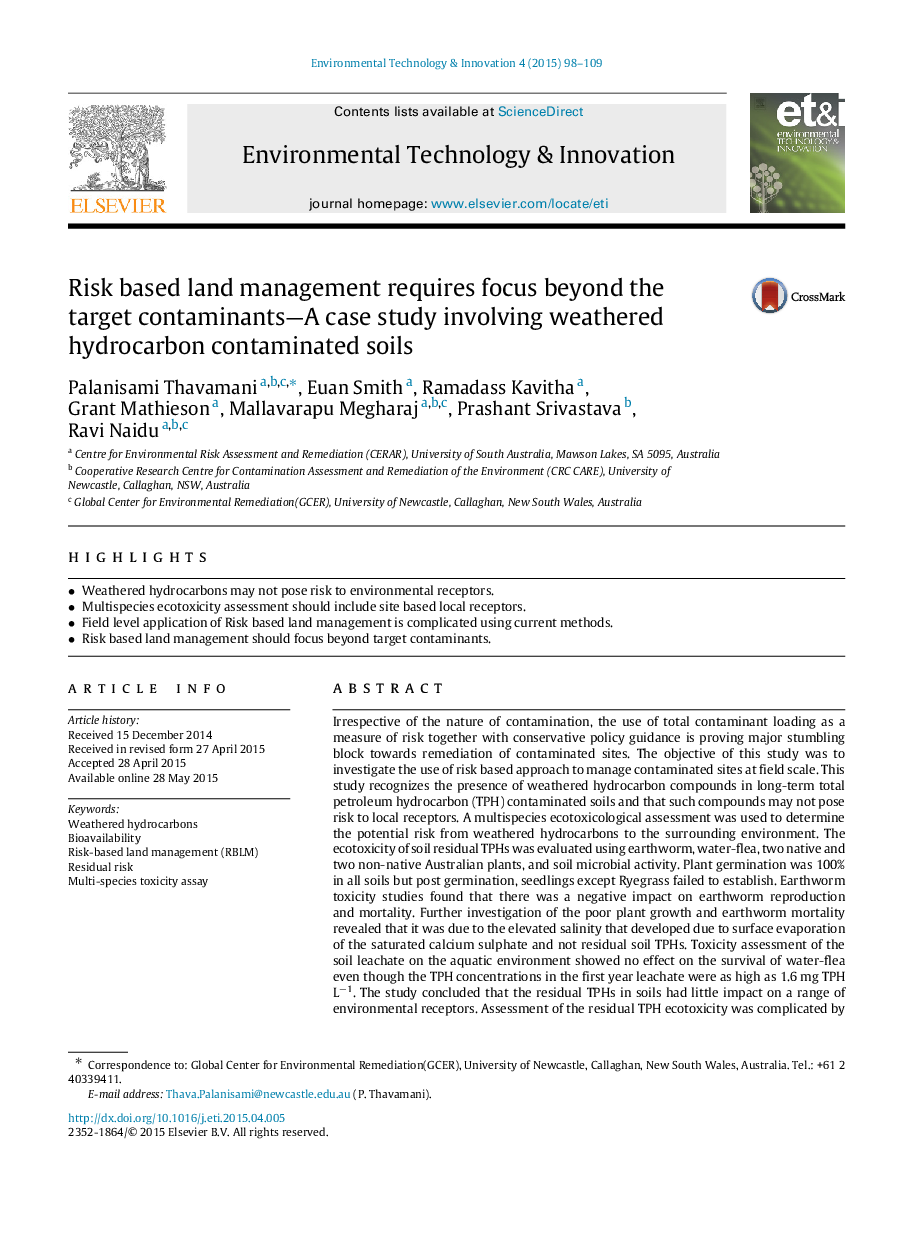| کد مقاله | کد نشریه | سال انتشار | مقاله انگلیسی | نسخه تمام متن |
|---|---|---|---|---|
| 4428226 | 1619284 | 2015 | 12 صفحه PDF | دانلود رایگان |
• Weathered hydrocarbons may not pose risk to environmental receptors.
• Multispecies ecotoxicity assessment should include site based local receptors.
• Field level application of Risk based land management is complicated using current methods.
• Risk based land management should focus beyond target contaminants.
Irrespective of the nature of contamination, the use of total contaminant loading as a measure of risk together with conservative policy guidance is proving major stumbling block towards remediation of contaminated sites. The objective of this study was to investigate the use of risk based approach to manage contaminated sites at field scale. This study recognizes the presence of weathered hydrocarbon compounds in long-term total petroleum hydrocarbon (TPH) contaminated soils and that such compounds may not pose risk to local receptors. A multispecies ecotoxicological assessment was used to determine the potential risk from weathered hydrocarbons to the surrounding environment. The ecotoxicity of soil residual TPHs was evaluated using earthworm, water-flea, two native and two non-native Australian plants, and soil microbial activity. Plant germination was 100% in all soils but post germination, seedlings except Ryegrass failed to establish. Earthworm toxicity studies found that there was a negative impact on earthworm reproduction and mortality. Further investigation of the poor plant growth and earthworm mortality revealed that it was due to the elevated salinity that developed due to surface evaporation of the saturated calcium sulphate and not residual soil TPHs. Toxicity assessment of the soil leachate on the aquatic environment showed no effect on the survival of water-flea even though the TPH concentrations in the first year leachate were as high as 1.6 mg TPH L−1−1. The study concluded that the residual TPHs in soils had little impact on a range of environmental receptors. Assessment of the residual TPH ecotoxicity was complicated by the elevated salinity of stockpile soils which impacted on the earthworm and phytotoxicity assessments. Therefore results of this study suggest that it is paramount to focus beyond target contaminants while implementing risk-based management approach. Indicators for risk based assessment are considered critical for regulatory decision making. The results of this study provide a valuable input in to the risk based management of contaminated sites.
Journal: Environmental Technology & Innovation - Volume 4, October 2015, Pages 98–109
